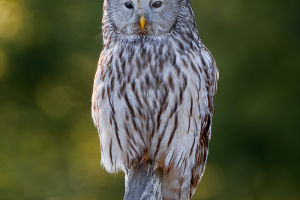The Hoopoe is a distinctive and colorful bird species found in parts of Europe, Asia, and Africa. It belongs to the family Upupidae and is the only extant member of its genus.
Hoopoes are notable for their distinctive appearance, with a prominent crest of feathers on their heads, long curved bills, and striking black and white markings on their wings and tails. They are also known for their unique vocalizations, which include a distinctive "hoop hoop hoop" call. They are generally found in open woodlands, savannas, and grasslands, and are often seen foraging for insects on the ground or in trees. They are also known to probe the soil with their long bills to find food.
Hoopoes are migratory birds in much of their range, with populations in Europe and Asia typically wintering in Africa. They are also known for their elaborate courtship displays, which involve the male performing a series of acrobatic movements and calling loudly to attract a mate.
The Hoopoe is considered a symbol of good luck and protection in many cultures and has been the subject of numerous works of art and literature throughout history.
Hoopoes are fascinating birds with many interesting stories and facts associated with them. Here are a few:
1. Hoopoes have a distinctive crown of feathers on their head that they can raise and lower. In some cultures, this crown of feathers has been associated with royalty and good luck.
2. Hoopoes are found in many parts of the world, including Africa, Europe, and Asia. They are known for their striking appearance, with a long, curved bill and beautiful plumage.
3. In ancient Egypt, the hoopoe was considered a sacred bird and was associated with the sun god Ra. The bird's distinctive crest was also used as a symbol of resurrection and new life.
4. Hoopoes are monogamous and often mate for life. They build their nests in tree hollows, rock crevices, or even in holes in walls.
5. The hoopoe's diet consists mainly of insects, which they catch by probing the ground with their long bills. They are also known for their unique feeding technique of "anting," where they use ants to help clean their feathers and remove parasites.
6. In some cultures, the hoopoe is seen as a symbol of good luck, while in others, it is considered a bad omen. In Greek mythology, the hoopoe was associated with the god of love, Eros, and was said to have magical powers.
7. Hoopoes have also inspired many works of literature, poetry, and art. They are featured in stories from the ancient Greek poet Homer to the contemporary British novelist J.K. Rowling.


